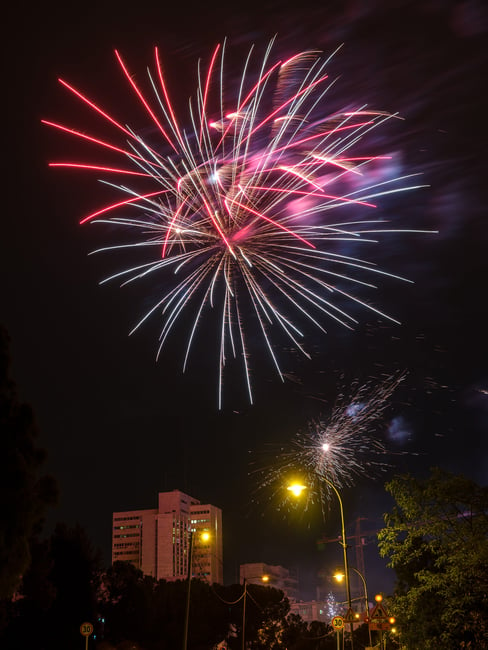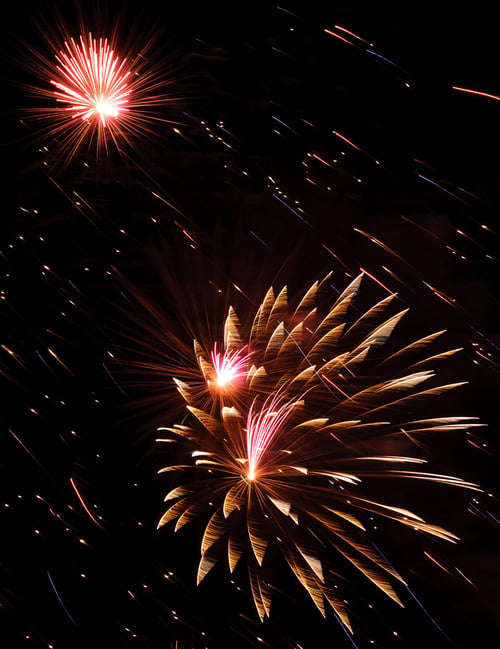How to Photograph Fireworks – Everything You Need to Know
 NIKON D700 + 70-200mm f/2.8 @ 90mm, ISO 200, 5 sec, f/10.0
NIKON D700 + 70-200mm f/2.8 @ 90mm, ISO 200, 5 sec, f/10.0
Do you want to know how to photograph fireworks, whether for the 4th of July or any other occasion? Fireworks can be tricky to capture properly, especially considering how many people try to photograph them with a phone. In this article, I’ll provide detailed information on photographing fireworks based upon my experience, which applies no matter what camera you’re using
 NIKON D700 + 70-200mm f/2.8 @ 90mm, ISO 200, 5 sec, f/10.0
NIKON D700 + 70-200mm f/2.8 @ 90mm, ISO 200, 5 sec, f/10.0Do you want to know how to photograph fireworks, whether for the 4th of July or any other occasion? Fireworks can be tricky to capture properly, especially considering how many people try to photograph them with a phone. In this article, I’ll provide detailed information on photographing fireworks based upon my experience, which applies no matter what camera you’re using

 The good news is that you don’t need an expensive camera to photograph fireworks. Any camera that allows shooting in
The good news is that you don’t need an expensive camera to photograph fireworks. Any camera that allows shooting in 






تعليق